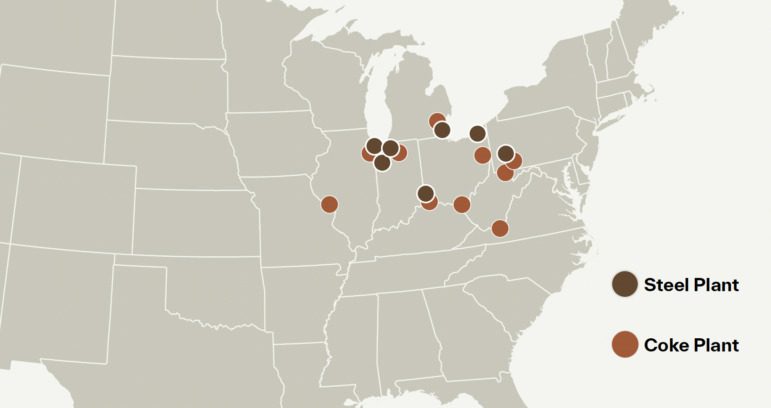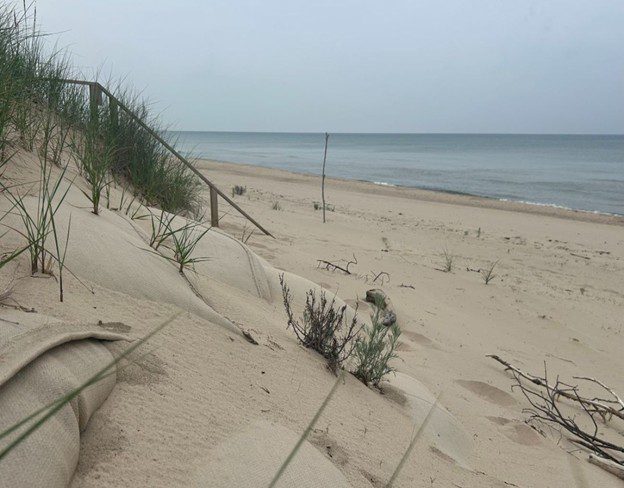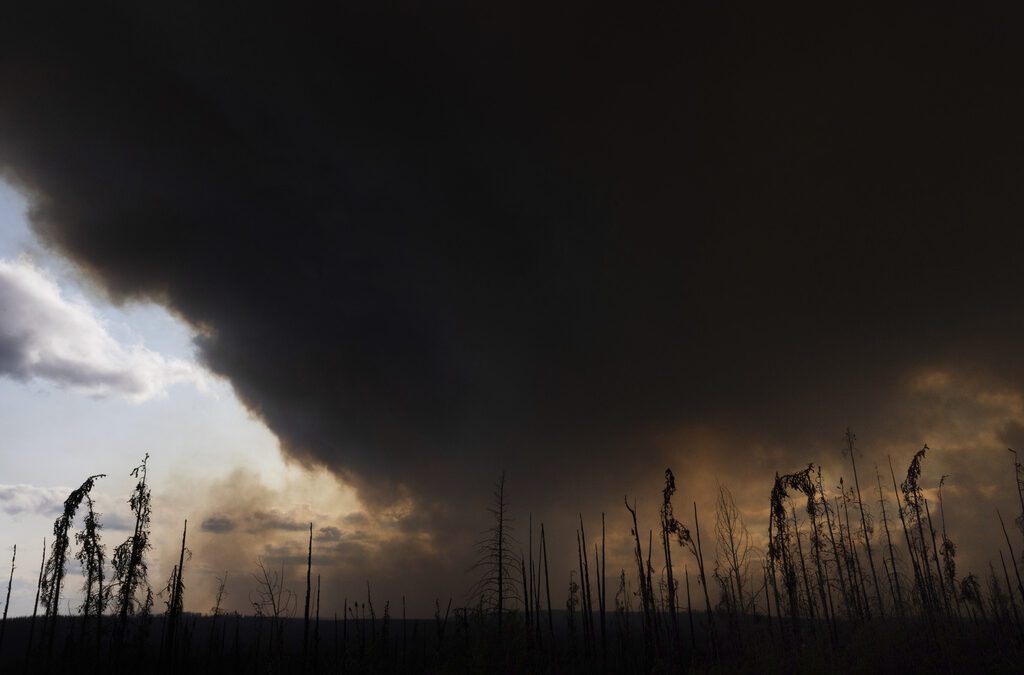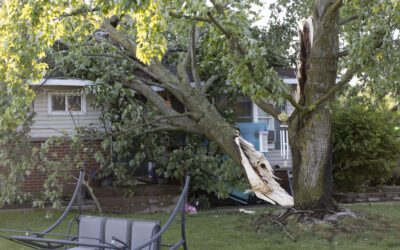
Most of the country’s steel and coke facilities are concentrated in Great Lakes states: Industrious Labs
By Joshua Kim, Capital News Service
LANSING – Pollution from coal-based steel production causes hundreds of premature deaths each year, with people in Southeast Michigan and elsewhere in the Great Lakes region bearing much of the burden, according to a recent report.
The nonprofit research group Industrious Labs looked at 17 coal-based steel plants and coke facilities operating in the United States, including two in Michigan, and the health and environmental problems they cause in surrounding communities.
Emissions from these facilities include pollutants linked to significant health and environmental problems, including nitrogen oxides, sulfur dioxide, fine particulate matter and lead.
Together their pollution is responsible for as many as 892 premature deaths per year, according to Industrious Labs. Those emissions also trigger around 250,000 cases of asthma symptoms annually, are linked to cancer rates 12% to 26% higher than the national average and result in up to $13.2 billion in annual health care costs, the report says.
The group based its results on an Environmental Protection Agency computer model that uses self-reported industry data.
“Communities don’t have access to this type of information,” said Hilary Lewis, the steel director at Industrious Labs. “By doing this report, we are giving people who live closest to these facilities, who are most impacted, who are most likely to be experiencing these health harms, a tool in advocating for cleaner alternatives.”
All but one of the country’s coke plants and all of its operating coal-based steel plants are located in Great Lakes states, according to the report. Coke is a fuel derived from coal that is used in steelmaking.
Among them is the Dearborn Works in Dearborn and owned by Cleveland-Cliffs. According to the company website, it does “carbon steel melting, casting, cold-rolling and finishing operations for carbon steel.”
Also among them is DTE Energy’s EES coke plant in River Rouge.
That includes U.S. Steel’s Gary Works, the largest steel processing plant in the country. Pollution from the facility puts residents of Gary, Indiana, among the 10% of Americans who are most at risk of developing asthma and low life expectancy, according to the report.
“The steel mills dominate what goes on here,” said Carolyn McCrady, a member of Gary Advocates for Responsible Development, a local environmental advocacy group. “They are still pumping out all that stuff into our air, our water, and our land and so that is a huge issue that we have to deal with.”
Residents cannot plant gardens in their yards, swim in Lake Michigan or fish in certain parts of the lake because of the toxic substances released by Gary Works into the surrounding areas, McCrady said.
Despite these challenges, McCrady said Gary residents remain optimistic about their city’s future.
She said she hopes that Nippon Steel, which agreed in 2023 to purchase U.S. Steel, will be more open to joining the industry’s transition to “green” steelmaking. President-elect Donald Trump, however, has threatened to block the Japanese company’s acquisition of U.S. Steel.
One of the biggest changes in the industry is the decreasing use of coke-burning blast furnaces, Lewis said. Instead, some facilities are switching to direct reduced iron technology that operates at lower temperatures and can run on natural gas or hydrogen. The latter fuel can be produced with renewable energy sources.
In an emailed statement, U.S. Steel media relations representative Andrew Fulton said the company “is aware of the study and is still reviewing the information contained in it.”
Fulton said U.S. Steel employees work to make steelmaking as environmentally conscious as possible and that the company is on track to working to reduce its greenhouse gas emissions.
Joshua Kim writes for Great Lakes Echo.

Empowering environmental stewardship: barn sanctuary champions compassion and conservation
By Donté Smith, Capital News Service LANSING — The Great Lakes, a vital freshwater expanse for millions, face an ongoing environmental crisis....

Can Michigan’s forests survive climate change? One researcher is finding out
By Emilio Perez Ibarguen, Capital News Service LANSING – As Michigan’s climate warms, tree species like red pine and eastern white pine may no...

Years after high water crisis, lax policies leave Michigan coast vulnerable
By Emilio Perez Ibarguen, Capital News Service LANSING – Kathy and Tom Brickley knew erosion would be an immutable part of owning a property on Lake...

Air quality worsens in eastern US as Canadian wildfire smoke hangs over Midwest
PORTLAND, Maine (AP)—Smoke from Canadian wildfires worsened air quality in the eastern U.S. on Wednesday as several Midwestern states battled...

Landmark study finds Great Lakes have entered a new era with climate change, extreme events
The Great Lakes has officially entered a new climate era, and the past is no longer a reliable guide for the future. That's the landmark finding in...





